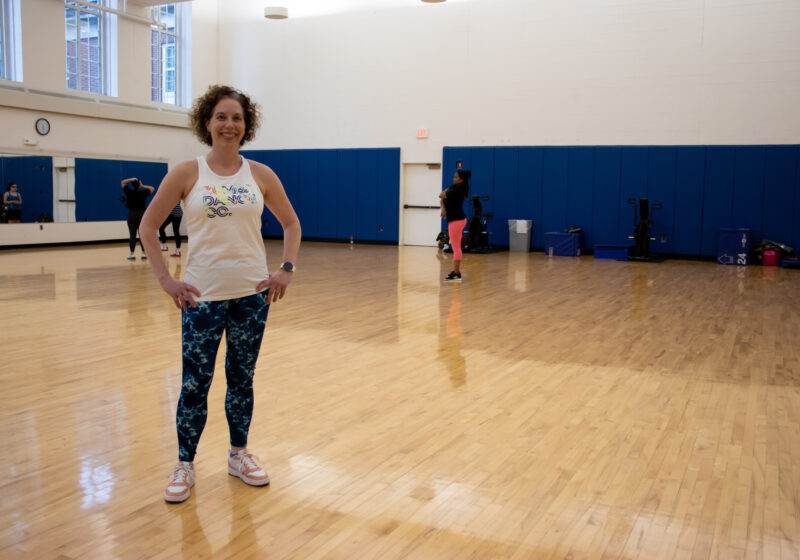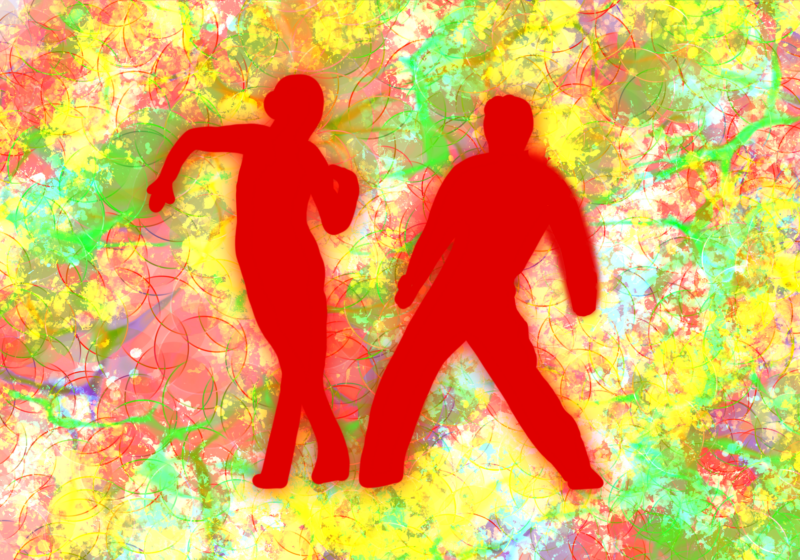If you’ve ever entered the Goergen Athletic Center (GAC) on a Tuesday evening, you’ve likely heard the pounding rhythmic Latin music of the weekly Zumba class emanating from the Leibner Cooper Room. Here, approximately 30 people, mostly undergraduates, gather every week for an hour of Zumba led by Dr. Caren Gellin.
During the day, Gellin is the Pediatric Residency Program Director at the UR Medical Center (URMC) and a pediatrician at Golisano Children’s Hospital. At night though, twice a week she leads Zumba classes: one on River Campus and one at the URMC fitness center in College Town. Zumba classes attract all sorts of people; it’s a trademarked Latin-inspired dance cardio workout. Participants don’t need to copy Gellin’s moves exactly, rather she tells everyone to have fun and move their bodies in whatever way feels the most comfortable for them. “There are no mistakes in Zumba,” she says.
Gellin was first introduced to Zumba in 2010. While looking for a fun way to workout while recovering from her pregnancy and birth the previous year, she stumbled upon a Zumba class. She loved her first instructor, and got hooked. Only a year and a half later, she became a certified Zumba instructor after attending a day-long training . After teaching at several Rochester-area gyms, Gellin eventually started teaching at URMC’s old fitness center location in the basement of the hospital. She added on a River Campus class at the GAC once in-person academic classes resumed post COVID-19 shutdown.
Each year at URMC, a new cohort of unsuspecting pediatrics residents get a crash course in Zumba as well. Gellin teaches her residents a Zumba class when onboarding, sometimes adding another class during a rotation in their second year. “Residency is a time where it’s probably every physicians’ steepest learning curve in their life,” Gellin said. Drawing some comparisons to beginning a Zumba class, she said, “It’s a time where they are thrown into doing things they may not feel comfortable doing but there’s always people around to support them.”
Gellin noted that most of her job is actually centered around education rather than practicing medicine, so she spends a lot of time thinking about what safe learning spaces mean and look like. This has translated into her Zumba teaching as well; while there are no mistakes in Zumba, as she tells newcomers, there are unfortunately mistakes in medicine — some with serious consequences. Gellin works on setting up learning so her residents can have safety nets to catch them if they make an error in judgment and prevent patient harm. “A really important part of medicine is actually ‘be who you are,’” Gellin said. “It’s ok if you do it a little differently than I do it. I’m your guide.”
There are four main styles of dance in Zumba: merengue, salsa, cumbia, and reggaeton. Gellin explained that each one has its own core steps to it, so mastering those is key for most Zumba dances. However, it’s not limited to just those four; Gellin enjoys incorporating hip hop, bhangra, and soca as well. The dances are structured in a way where the motions repeat and build on each other for each component of the song, such as a verse, refrain, or interlude. Gellin starts with the footwork, slowly incorporating arms and other movements. As a member of the Zumba instructor network, she receives access to new exclusive songs every month and choreography every other month, which takes a huge workload off her shoulders. Gellin almost always changes the choreo to match her own style (and occasionally choreographs completely on her own!) but has found herself leaning on the pre-created choreo given her intense workload — although she does add new songs to the rotation approximately once per month for her and her students’ sake.
“When I think about the principles of self determination theory, which helps think about motivation, one of the things is competence, or feeling like you can do it,” she explained, noting how she loves moments where she can tell some of the students have memorized the moves, sometimes even stepping up to lead the class with her. “That’s a really fun time for me as an instructor,” Gellin shared. “I love those moments because they’ve just mastered it.”
Up at the front of the room by the mirrored wall, Gellin brings her best energy every class. As the instructor, she explained, you need to display more energy than everyone else.
“Every student participates in the class at a different intensity level, so my goal is to present a level that no matter where you are, you have to push yourself.” Zumba is meant to be a workout after all, with songs incorporating more fitness movements such as squats and jumping jacks. Gellin makes sure to alternate the higher and lower intensity songs and dances, giving students a bit of a breather in between and always ending with a cooldown period of stretches and deep breathing.
In addition to Zumba, Gellin’s other main forms of exercise are lifting and running, which she picked up during the pandemic when workout classes were canceled. “I’ve been working out since I was 10,” she said, reflecting on all of her past and present activities. “This [Zumba] is probably the most fun of all of them.”





